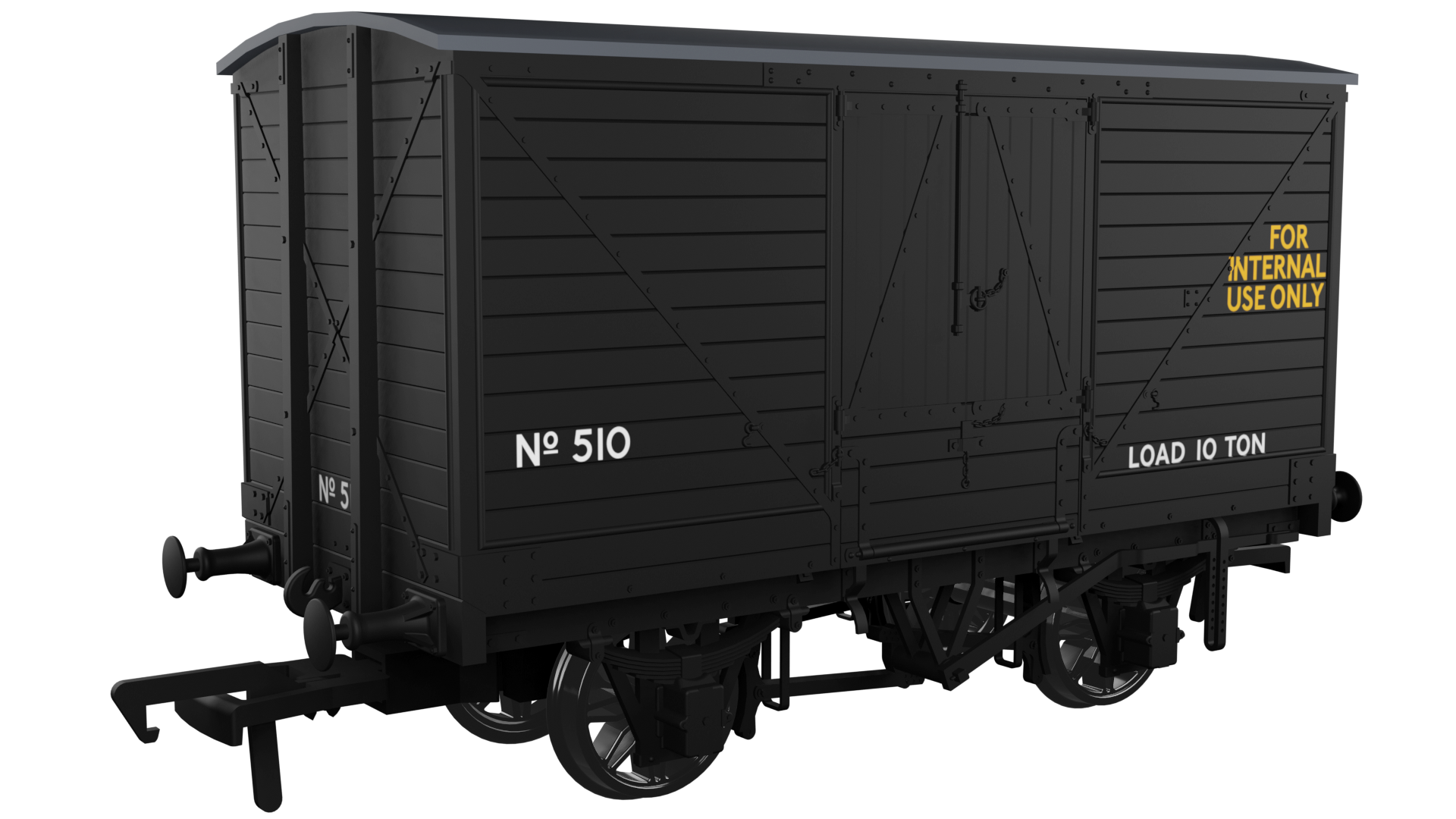Description
In 1908 the LNWR introduced a new covered goods van – the Diagram 88. This design became the LNWR standard van design from their introduction right up until the grouping with over 6000 examples constructed.
The van’s lineage can be traced back to earlier diagrams and was in essence an updated version of the D87 vans that preceded it. In 1904 the Goods Conference decreed that new covered vans should be built to certain dimensions, including a length of 21’ over buffers, an 8ft width, a wheelbase of 9’9” and be able to carry 8 tons. The D88 vans incorporated all these features but were uprated to carry 10 tons. This was an improvement over the 19’ long 9’ wheelbase vans that formed D87.
Like previous LNWR vans, the D88 incorporated a set of 5ft wide horizontally-planked cupboard doors with a fall door below making access into platforms and goods loading facilities easier. Under LMS ownership, the doors were often replaced by vertically-planked alternatives.
Many of the vans were built at the LNWRs Earlestown works, however a number were also built by outside contractors. During the building process, a number of changes were seen including the use of several different buffer designs, different styles of headstocks, as-built wooden and later 1910-style iron roofs, flat fronted and bulbous axle boxes, and both split spoke and plain spoked wheelsets. Various batches of the wagons were unfitted, through-piped or fitted with vacuum brakes.
The wagons had a long service life with large numbers surviving into British Railways ownership and lasting into the early 1960s. Many were also pressed into Departmental service in various locations, whilst others were sold off into private use, which included the Army and Navy.
No.510
Dockyard black
Square headstocks
Wooden roof
2-rib buffers
Vertically-planked doors
Flat-fronted axleboxes
Split-spoke wheels
Metal wheels and bearings
Intricately detailed brake gear
NEM pockets
Lots of separately fitted parts

